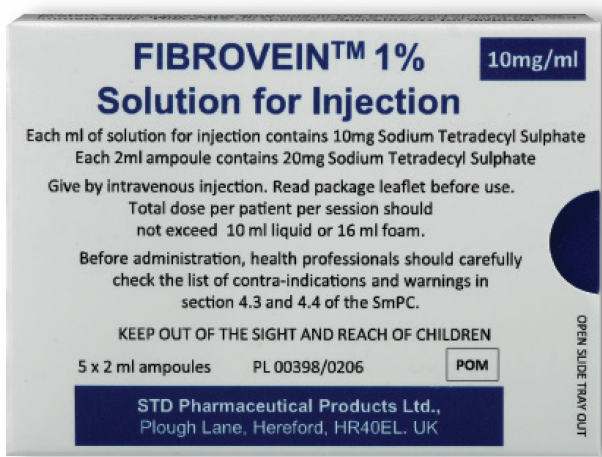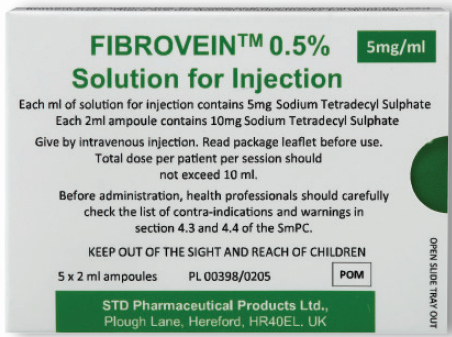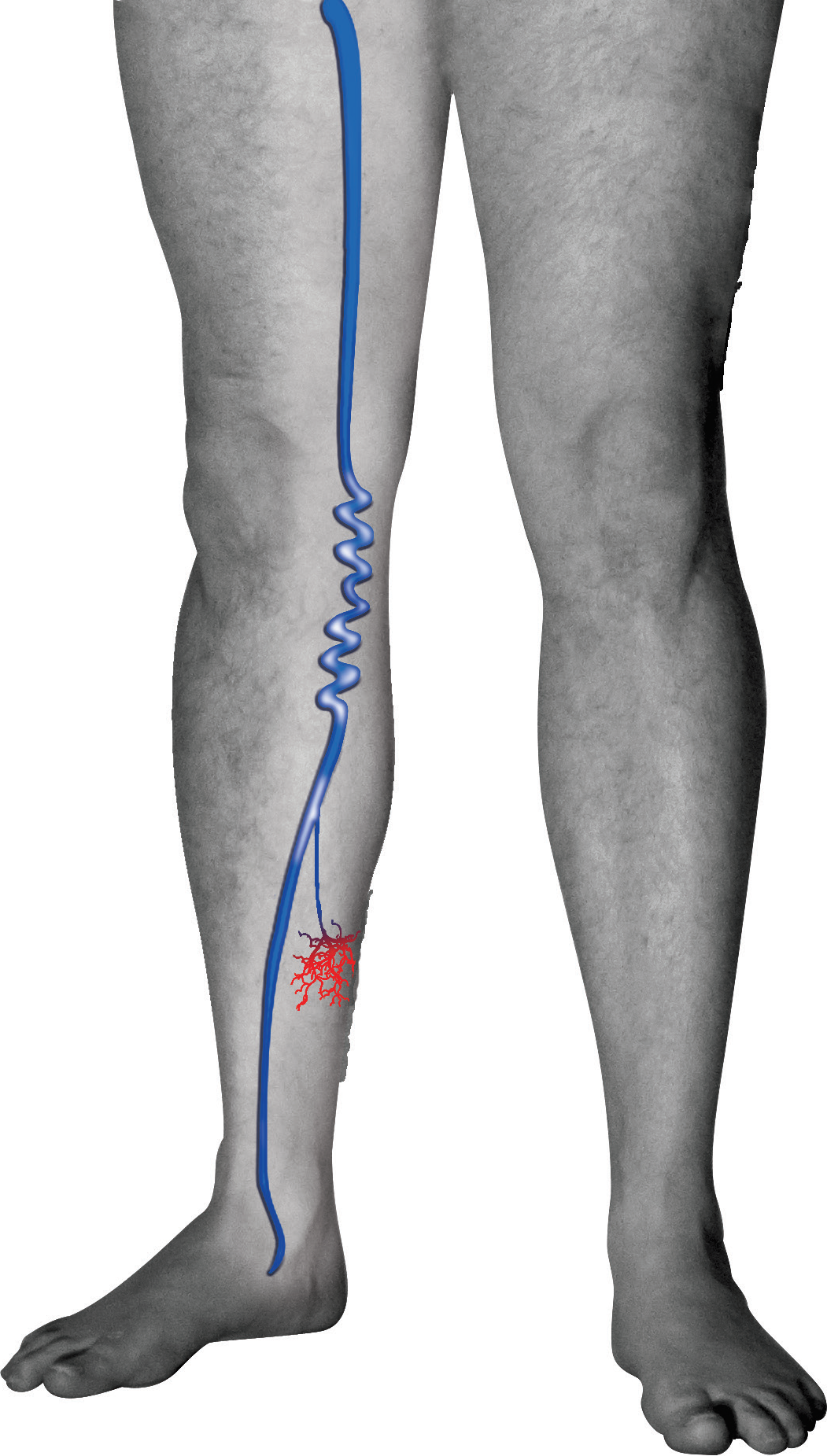![]()
Fibrovein is a sterile aqueous solution of sodium tetradecyl sulphate available in four strengths 3%, 1%, 0.5% and 0.2% each containing 2% benzyl alcohol and buffered to pH7.6, indicated for the treatment of uncomplicated primary varicose veins, recurrent or residual varicose veins following surgery, reticular veins, venules and spider veins of the lower extremities that show simple dilation. Fibrovein is indicated in adults.
LARGE VEINS 3%
3% Fibrovein can be converted to foam to treat larger varicose veins. It is recommended for interfascial truncal veins such as the great saphenous vein (GSV), small saphenous vein (SSV) and major tributaries. 0.5-2.0ml of foam should be injected at multiple sites along the vein to be treated (max. 16ml).
SMALL TO MEDIUM VEINS 1%
1% Fibrovein can be converted to foam to treat small to medium varicose veins. It is recommended for extrafascial varicose veins and smaller side branches. 0.5-2.0ml of foam should be injected at multiple sites along the vein to be treated (max. 16ml).
RETICULAR VEINS 0.5%
0.5% Fibrovein is recommended for reticular veins and larger venules. Inject 0.1-1.0ml of liquid at sites along the vein to be treated (max. 10ml).
SPIDER VEINS 0.2%
Spider veins and telangiectasia should only be treated with 0.2% Fibrovein, stronger solutions may cause pain, pigmentation and ulceration. Use a 30G needle, inject slowly and watch for blanching.
![]()

![]()

![]()

![]()


GENERAL GUIDELINES
It is important to choose the appropriate concentration of Fibrovein for the size of vein. Using too high a concentration can result in pain, pigmentation and ulceration. When using foam it should be prepared just before use and administered by an appropriately trained physician.
For larger veins it is recommended that the leg is raised. This technique will minimise the amount of blood in the injected segment which might dilute the Fibrovein solution. Adequate compression is recommended in all cases to minimise side effects such as hyper-pigmentation and thrombophlebitis.

